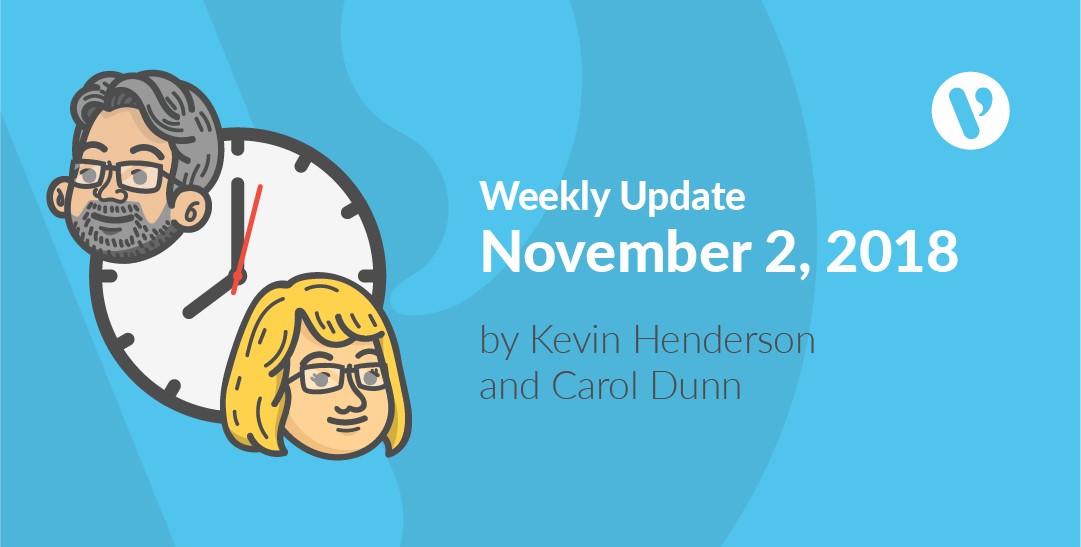If I could turn back time
In 1989, Cher famously sang “If I could turn back time…” and this weekend we can!
Because the clocks fall back on Saturday at head office due to Daylight Saving Time coming to an end for this year, we thought we’d talk about time for this Weekly Update.
Here’s a piece from Velsoft’s Time Management course:
Sometimes we need to approach things with a bit of attitude in order to get things done and do them well. We’re recommending that you can be a bit playful with this, and to be BOLD.
Do you spend a lot of time looking for things? Productivity research tells us that the average person spends about 10 per cent of the day looking for things. If that were so, you could gain five weeks a year just by getting your retrieval methods under control! If you tend to keep good track of things at work, consider things at home. Do you have a place for your keys, glasses, or lunch bags? Do you ever find yourself searching for things in the morning right before you leave for work? How long does it take you to find a particular file on your computer? (This is often one of the worst time suckers out there today!)
Sometimes you just need to handle the little things that reduce concentration and cause anxiety, like the clutter on your desk and the incomplete jobs. This is the opposite of prioritizing. Do the quick and dirty tasks NOW, even if you just do them for five minutes a day for the next two weeks. The crises in our lives are often the result of not handling the little things or not reacting to a niggling feeling that something is wrong. Ignore the little toothache and you wind up with a root canal.
While we talk a lot about balance, if we could accept the fact that each day is not going to be perfectly balanced, we’d probably be a lot more content with our work. Some days there will be nothing but fires to put out, but this can be balanced with days that are quieter and the phone isn’t jangling off the hook. Balance can also come from setting your work aside and going for a brisk walk at lunch, or phoning someone that you care about. Achieving balance is not necessarily about spending equal time on the things you like versus what you don’t like: it can be about the value of things. A big smile and a quick lunch with someone can balance out a morning spent in a frustrating meeting.
(Don’t forget to set your clock back an hour before you go to bed on Saturday night! And while you’re doing that, do your best Cher impression. “If I could turn back time/If I could find a way…”)
What’s in the Pipeline:
- Sydney is creating custom eLearning courses.
- Dylan is creating graphics for custom and internal customers.
- Ben is working on custom projects.
- Carol is writing blogs and refreshing courses.
- Jan is working on CA course components and eLearning QA.
Course Count:
Courses released this month:
Here is the official count of courses for both courseware and eLearning:
| Computer | SoftSkills | Total Courses | |
| Courseware | 286 | 175 | 459 |
| eLearning | 924 | 172 | 1096 |
Did you know?
- Daylight Saving Time is used to make better use of natural daylight in the evenings.
- In 1908 Thunder Bay (formerly called Port Arthur) in Ontario became the first place in the world to implement DST.
- In 1916, Germany became the first country to use DST on a national level.
- About 70 countries around the world observe DST.
- The difference in light is most noticeable in places further away from Earth’s equator, and consequently, many countries near the equator do not adjust their clocks for daylight saving.
- Neither China nor Japan observe DST.
- US inventor and politician Benjamin Franklin first proposed the concept of DST in 1784.
- To switch to DST, staff at Buckingham Palace and Windsor Castle in England and the Palace of Holyroodhouse in Edinburgh spend more than 50 hours adjusting the time of the more than 1,000 clocks located in the official residences of The Queen.



